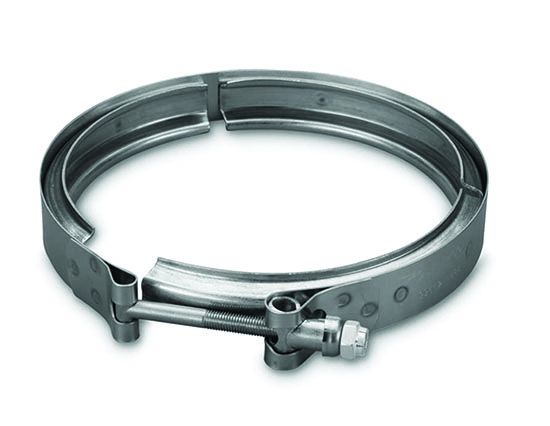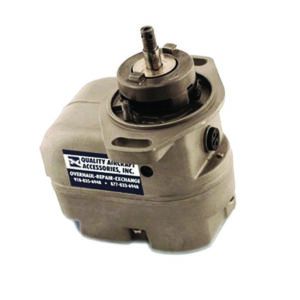
On July 27, 2022, the FAA proposed a new airworthiness directive (AD) that would require repetitive inspections of turbocharged, reciprocating engine-powered airplanes and helicopters, and turbocharged, reciprocating engines with “spot-welded, multi-segment v-band couplings at the tailpipe to the turbocharger exhaust housing flange.” Under the proposed AD, the clamps/couplings would be inspected annually, regardless of their accumulated time-in-service (TIS) and a life limit for the components would be established by removing them from service every 500 hours TIS. Since it is a proposed AD, not final, the FAA is requesting comments from the public by November 4, 2022.

According to the preamble in the notice of proposed rulemaking (NPRM), the NTSB has made seven recommendations regarding the components since 1974. Additionally, there are 10 ADs already on the books, plus an additional 11 special airworthiness information bulletins (SAIBs) addressing the components as installed on various turbocharged piston engines, whether installed at the time of production, under a supplemental type certificate (STC) or other means. The FAA said, “In spite of these efforts, failures continue to occur and the number of significant safety events continues to increase.”
Some years ago, the General Aviation Joint Steering Committee (GAJSC), a panel composed of FAA, industry and user-group organizations, convened to find ways to mitigate fatal powerplant-failure accidents. (Disclosure: Our editor-in-chief participated in this effort.) According to the FAA’s NPRM, “The data studied by the working group contained evidence of pre-existing cracking of the couplings, known embrittlement at the spot weld locations simply due to that manufacturing method, and outer band cupping on the multi-segment couplings (which is the result of age, over-use, and potential over-torqueing). The working group also found that many of the couplings had safety wire across the bolt end. The safety wire could be helpful if there was a bolt or nut failure (extremely rare events) or the nut was missing. However, the safety wire was of no value when the failure was transverse band cracking and total separation at the spot weld.”
According to the FAA, “The data studied by the working group indicated many accidents were due to v-band couplings that were of the multi-segment, spot-welded design, when used in a specific location (the tailpipe to the turbocharger exhaust housing flange on turbocharged reciprocating engine-powered aircraft).”
Also according to the FAA’s NPRM, “This condition, if not addressed, could lead to failure of the spot-welded, multi-segment exhaust tailpipe v-band coupling, leading to detachment of the exhaust tailpipe from the turbocharger and allowing high-temperature exhaust gases to enter the engine compartment. This could result in smoke in the cockpit, in-flight fire, and loss of control of the aircraft.”
NEW FAA AD TARGETS RECENT BENDIX MAGNETOS
Meanwhile, another new airworthiness directive (AD 2022-16-03) focuses on new-manufacture S-1200 magnetos from Continental Aerospace Technologies, commonly referred to as Bendix magnetos, that possibly were not assembled with the required white grease. The new AD went into effect on August 15, 2022, and applies to as many as 740 magnetos. The magnetos could be on new engines from both Continental or Lycoming.
According to the FAA’s AD, the affected magnetos were “assembled without properly lubricated roller bearings.” This defect, if uncorrected, may cause “accelerated wear in the contact and cam follower that could lead to seizure and failure of the magnetos,” the AD states. “The FAA considers replacement or inspection of the affected magneto to be an urgent safety issue.”
“Replacement or inspection of the affected magneto must be accomplished within 25 operating hours time-in-service (TIS) or, if any affected magneto has accumulated more than 25 operating hours TIS, before further flight after the effective date of this AD.”
The AD references Continental Aerospace Technologies Critical Service Bulletin CSB673, Revision C, dated May 24, 2022, which specifies procedures for removing and replacing affected magnetos or inspecting an affected magneto and replacing magneto components if no white grease is detected, as applicable, and reassembling the magneto.

If President Biden gets his way in the U.S. Senate—never a sure thing—the FAA’s new leader will be Phillip Washington, who currently is the CEO of the Denver (Colo.) International Airport (KDEN). The administration announced Washington’s nomination to the five-year post in early July. According to online sister publication AVweb.com, former Administrator Steve Dickson “announced plans to resign last February and officially stepped down at the end of March. Billy Nolen, who previously worked as associate administrator for aviation safety, is serving as the agency’s acting administrator until a new administrator is chosen.”
In addition to his service at KDEN, Washington was the CEO of the Los Angeles County Metropolitan Transportation Authority (Metro). He previously was the CEO of the Denver Regional Transportation District, where he worked for almost a decade before his promotion.
CONGRESS LOOKS AT UNLEADED AVGAS
A July 28, 2022, hearing of the U.S. House of Representatives’ Oversight Committee’s subcommittee on the environment featured George Braly, co-founder of General Aviation Modifications Inc. (GAMI) and Chris D’Acosta, the CEO of Swift Fuels. According to online sister publication AVweb.com, both testified that their companies have “developed candidates for replacing 100 low lead (100LL) fuel with lead-free substitutes, but have faced regulatory headwinds that have stalled approvals.”
“Representatives from the FAA and EPA did not participate in the subcommittee hearing, with member legislators referring to their absence as ‘unconscionable.’ The EPA has scheduled a draft of an ‘endangerment finding’ on leaded aviation gasoline for publication in October. A final version of the draft is expected a year later, with action on the finding anticipated to take up to eight years. The FAA did express commitment to a 2030 deadline to bring unleaded aviation gasoline online and plans to increase funding for the effort to $12 million (from $6 million) for the next fiscal year,” according to AVweb.com.



